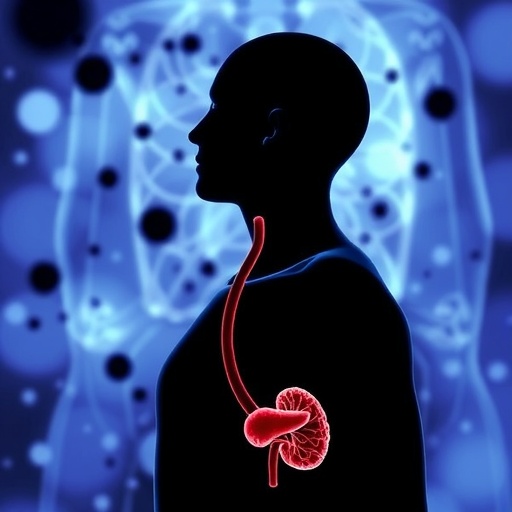
Breast cancer, a leading cause of cancer-related mortality among women, features a complex landscape of genetic alterations that can influence its behavior and treatment response. Recent research conducted at Stanford Medicine has unveiled a groundbreaking classification system that emphasizes the pivotal role of structural variations in the DNA of breast tumors. These variations not only serve as essential biomarkers for tumor aggressiveness but also provide insights into the likelihood of recurrence, aiding in the personalization of treatment strategies.
The study, led by Christina Curtis, PhD, shines a spotlight on the genetic underpinnings of breast cancer. By categorizing tumors into distinct groups based on key structural changes in the genome, including the amplification of oncogenes and the presence of small, extrachromosomal DNA circles, the research offers a new perspective on tumor evolution. These structural variations emerge early in cancer development and persist as the disease progresses, underscoring their significance in understanding patient prognosis.
Curtis and her team discovered that breast cancers can be broadly classified into three main categories, each reflecting unique genomic alterations. This classification system replaces traditional methods that primarily rely on protein receptor expression, identifying higher-risk subgroups that may not be adequately addressed by conventional treatment protocols. With such precise stratification, clinicians may better ascertain which patients require aggressive intervention and which can afford a more conservative approach.
Furthermore, the research builds upon earlier findings that incorporated machine-learning techniques to assess genetic variations among breast cancer patients. By analyzing DNA sequences from both healthy cells and cancerous tissues, the team established a comprehensive molecular map of the alterations that happen as breast cancer evolves. Remarkably, this study revealed eleven clinically significant subgroups, showcasing a diversity in prognostic outcomes, thus highlighting the pressing need for tailored patient management.
Among the findings, it was noted that while hormone receptor-positive breast cancers generally respond well to existing therapies, a significant number still face the risk of recurrence even after successful treatment. This suggests that conventional therapies, while effective, may not capture the nuanced genetic landscape of breast tumors, thereby necessitating a reevaluation of treatment protocols to improve patient outcomes.
In the broader context of cancer biology, this research aligns with ongoing efforts to understand how various structural genomic alterations contribute to therapy resistance and metastasis. By isolating the specific mutations and genomic features associated with higher risks of recurrence, the researchers aim to develop innovative therapeutic strategies that could disrupt these malignancies at their source.
The implications of this study extend beyond classification; they pave the way for exploring novel therapeutic avenues. For instance, existing drugs designed to target DNA repair deficiencies in BRCA1 and BRCA2 mutation carriers might prove beneficial for a subset of estrogen receptor-positive breast cancer patients who exhibit similar genetic vulnerabilities. This potential for repurposing therapies could significantly enhance treatment efficacy for a broader range of breast cancer patients.
In examining the genomic architecture of nearly 2,000 breast cancer cases, Curtis’s team revealed that high-risk hormone receptor-positive tumors exhibited complex yet localized amplifications of genes linked to cancer progression. These patterns shared similarities with HER-2 positive tumors, which are known for their aggressive nature and distinctive treatment pathways. Such revelations compel oncologists to rethink how they approach treatment plans for breast cancer, particularly for those characterized by intricate genetic profiles.
In stark contrast, triple-negative breast cancers displayed a far less stable genomic composition, with widespread alterations contributing to the malignancy’s notorious aggressiveness. This variance in genome stability further emphasizes the significant influence of molecular characteristics on disease trajectory and therapeutic response. As researchers delve deeper into these differences, they aim to foster a more profound understanding of tumor behavior, potentially leading to advanced interventions that are far more effective than current standards.
The notion that specific structural variations in breast cancer genomes are established early in tumor development carries profound implications for early detection strategies. Given that these alterations occur long before a patient presents with clinical symptoms, there lies an opportunity for preemptive intervention, which could improve long-term outcomes. By identifying these early genomic events, healthcare providers might develop screening protocols that target individuals at higher risk long before the onset of disease.
Moreover, Curtis and her colleagues believe that understanding the inherent vulnerabilities associated with these genetic alterations can catalyze the next wave of cancer therapeutics. The research underscores a crucial relationship between genomic architecture and immune response, which could inform the development of immunotherapies tailored to exploit specific tumor weaknesses. As the scientific community grapples with the intricacies of breast cancer treatment, such targeted approaches may usher in a new era of precision medicine.
In summation, the significant advances revealed by the Stanford research team illuminate the complexities of breast cancer genomes and their impact on clinical outcomes. The robust classification system developed from these findings serves as a promising tool for oncologists to refine treatment strategies, optimizing patient care in the face of diverse tumor biology. As research continues to unravel the mysteries of cancer genomics, the hope for improved detection, treatment, and patient survival becomes ever more tangible.
The revelations presented in this study not only reshape our understanding of breast cancer genetics but also urge a recalibrated perspective on how oncologists personalize care. By advocating for an approach that prioritizes the genomic intricacies of each tumor, the research sets the stage for transformative change in breast cancer treatment paradigms, potentially improving the lives of countless individuals battling this challenging disease.
Lastly, as the scientific dialogue surrounding breast cancer progresses, collaborations across specialties and institutions will be imperative. In order to capitalize on the burgeoning insights into cancer genomics, a multifaceted effort involving researchers, clinicians, and patients will help foster advancements in diagnosis and treatment, ensuring that progress in combatting breast cancer remains swift and effective.
Subject of Research: Breast cancer genetic variations and their implications for treatment
Article Title: Complex rearrangements fuel ER+ and HER2+ breast tumors
News Publication Date: January 8, 2025
Web References: http://dx.doi.org/10.1038/s41586-024-08377-x
References: N/A
Image Credits: N/A
Keywords: Breast cancer, genomic architecture, structural variations, precision medicine, tumor evolution, targeted therapies, biomarkers, HER-2 positive, hormone receptor positive, triple-negative, immunotherapy.
Tags: biomarkers for tumor aggressivenessbreast cancer genetic architecturebreast cancer recurrence likelihoodextrachromosomal DNA circles in tumorsgenomic alterations in breast cancerinnovative research in cancer treatmentoncogenes amplification in cancerpatient prognosis in breast cancerpersonalized treatment strategiesStanford Medicine breast cancer studystructural variations in breast tumorstumor classification system





